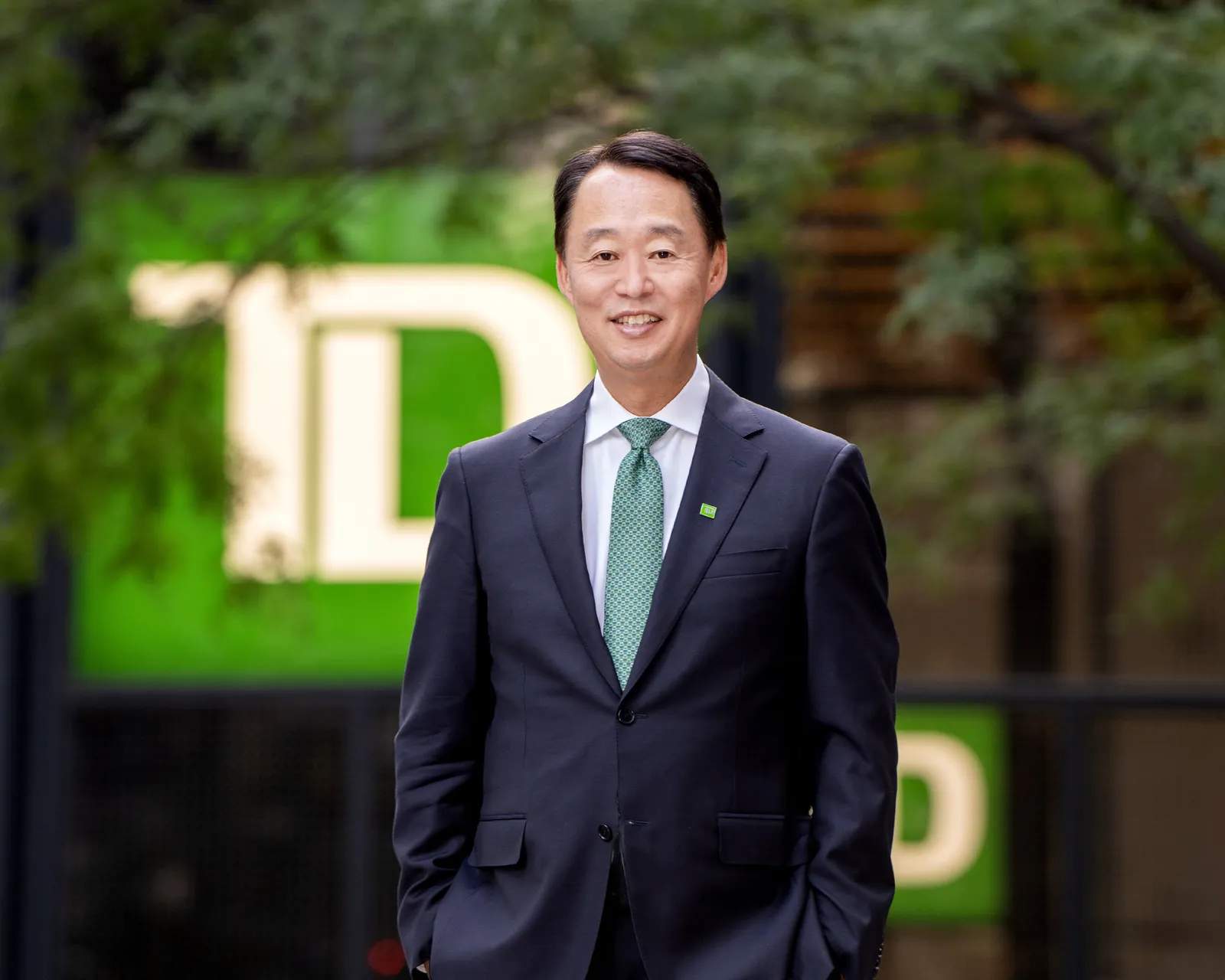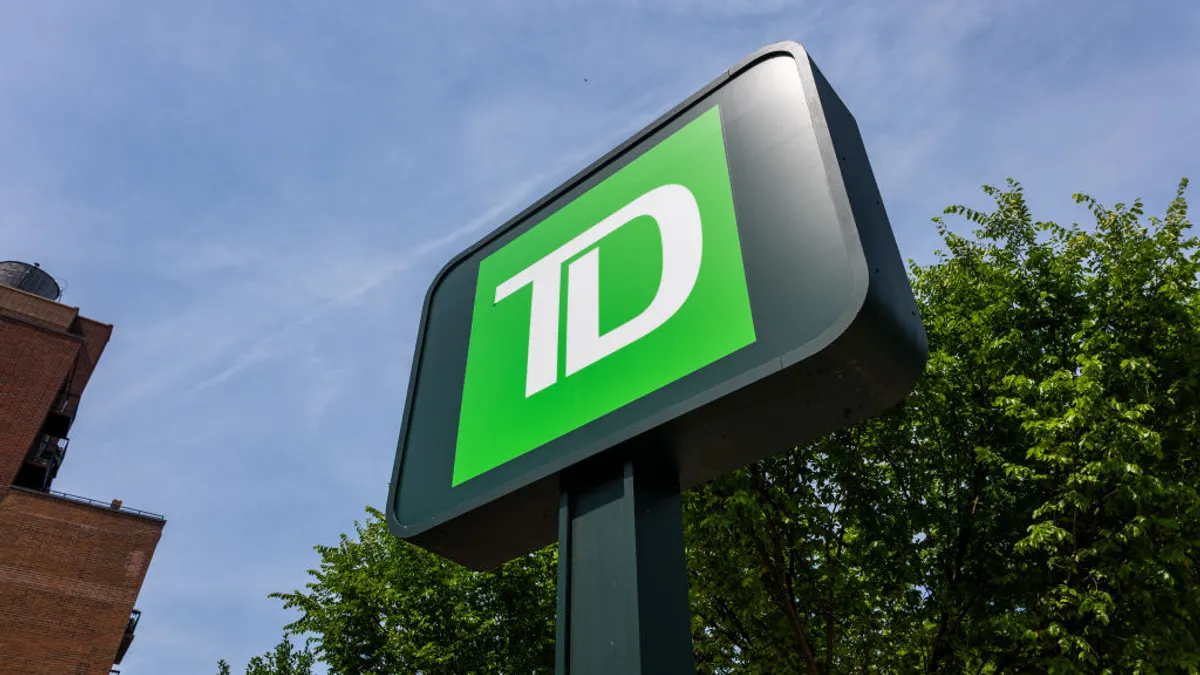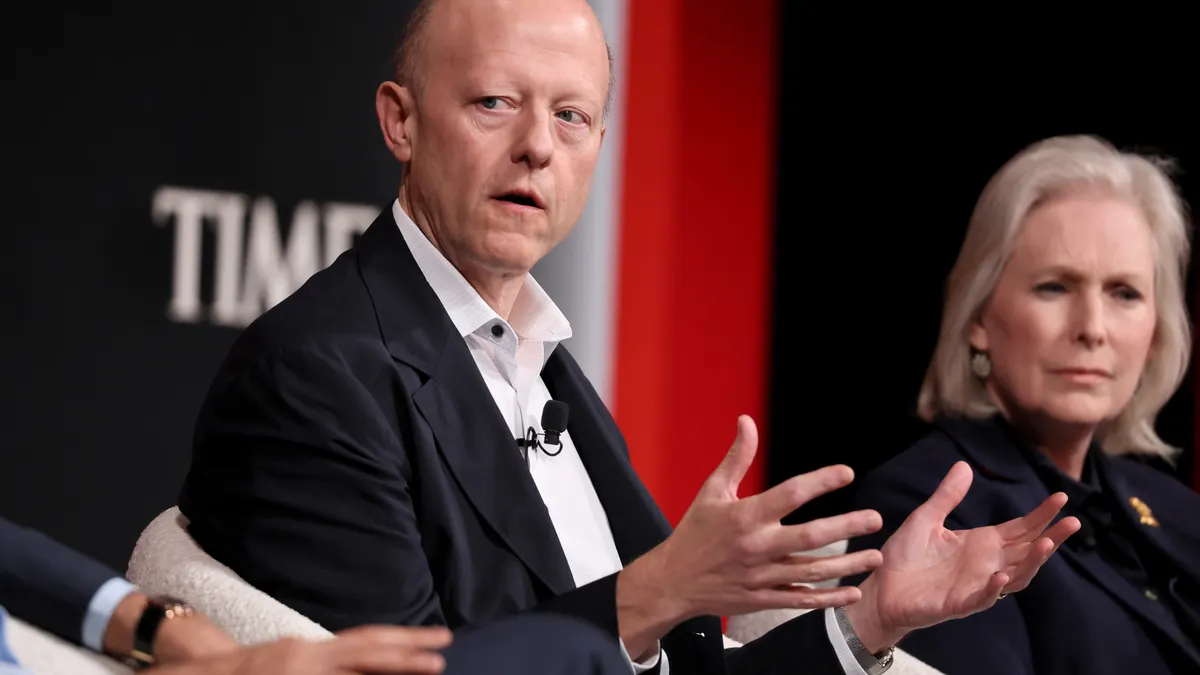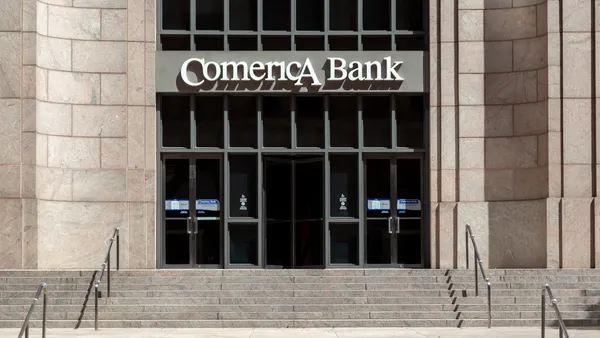Dive Brief:
- TD executives Monday promised to cut expenses by leaning on automation and artificial intelligence, reducing third-party spending, and emphasizing digital channels, all aimed at generating C$2.5 billion (US$1.8 billion) in annual cost savings, they said at an investor day event in Toronto.
- The Canadian bank also aims to boost revenue growth, in part by deepening relationships with existing clients, and reinstating medium-term growth targets it shelved nearly a year ago, when the bank pleaded guilty to money laundering-related charges and an asset cap was imposed on its U.S. retail banking operations.
- “Make no mistake, everybody: We will get this work done, and every leader in this organization is accountable,” CEO Raymond Chun told the event’s attendees.
Dive Insight:
After undergoing a strategic review, TD, Canada’s second-largest lender, is overhauling its cost base and moderating expense growth to generate C$2 billion to C$2.5 billion ($1.4 billion to $1.8 billion) in annualized savings, Chun said Monday.
“This effort is far-reaching and absolutely necessary,” said Chun, who took the helm of the bank in February. The bank said three months later that it was trimming 2% of its workforce as part of a broader restructuring.

The $2.1 trillion-asset bank wants to realize the added cost savings by moving more transactions to its digital channels; enhancing productivity and optimizing its branch footprint; using AI and automation to streamline processes; and cutting and consolidating vendor spending, executives said.
The bank’s executives Monday also repeatedly pledged discipline around capital management.
“We're purposely changing certain parts of our culture,” Chun said. “Accountability at all levels is non-negotiable.”
Chun noted this month’s hiring of Taylan Turan as the bank’s chief operating officer, who has run large-scale transformation programs and will “accelerate our change agenda, reshape operations and drive bank-wide efficiency.”
The bank is targeting 16% adjusted return on equity by fiscal 2029 – compared to 13% for fiscal 2026 – as well as 7% to 10% adjusted earnings per share growth, according to an investor day presentation. The bank also seeks to drop its 58% efficiency ratio into the mid-50s by fiscal 2029, Chun said.
“We are getting back to winning,” he said.
Outlining the path ahead for the bank’s U.S. operations, stateside CEO Leo Salom referred to the last couple of years as “a very challenging period.”
Since the historic AML settlement was announced last October, TD has “maintained stable deposit levels with minimal customer attrition,” while making notable progress with anti-money laundering remediation efforts, Salom noted.
“We have onboarded an outstanding AML leadership team, we've elevated our investigative capabilities, we've launched our next-generation transaction monitoring system, and we've implemented the first phase of our AI and machine learning solutions,” Salom said.
TD plans to complete most of its management remediation actions by the end of this year.
The bank has about 1,100 U.S. branches along the East Coast and about 29,000 U.S. employees. U.S. retail counts about 10 million clients and makes up about 26% of the Canadian bank’s overall revenue.
Since entering the U.S. about two decades ago, TD has developed footholds in the Philadelphia area, New York and New England, Salom said. However, “we lack relationship depth with many of our clients,” he said.
TD seeks to deepen ties with existing retail and commercial customers, including through expanding its fee-income generating wealth business with the hiring of 500 financial advisers in the U.S.
Additionally, “we operate an overly complex legacy operating infrastructure – a carryover from some of our past acquisitions.” The bank is focused on optimizing its branch footprint and retooling stores with more of an advisory role in mind.
The bank has refreshed 175 branches, “and we expect to have half of our network transitioned over the medium term,” he said. Since 2020, the bank has closed 174 branches and opened or relocated 62, and expects to close or relocate another 10% of its U.S. network.
Branches remain a “valuable source of both net new deposit gathering activities as well as, increasingly, it's going to be the source of the sale of more complex products and services,” Salom said.
TD has also exited businesses where it lacked scale, Salom noted, including winding down a $3 billion portfolio tied to its U.S. point-of-sale financing business, announced in May.
With those efforts, the bank aims to increase digital acquisition to 50% of total sales, boost digital adoption to 70% and push digital self-serve above 90%, Salom said.
To become more efficient, applying AI at scale is where “we've got the biggest opportunity, because it's where you can really shave significant amounts of cost from our unit cost structure,” Salom said. That’s “going to be critical for us, because we're large enough right now that we have a degree of scale, being a top 10 bank, but scale is being redefined in the U.S. continuously.”
Focusing on AI and process re-engineering work “will allow us to continue to become even more cost competitive in the future,” he said.











